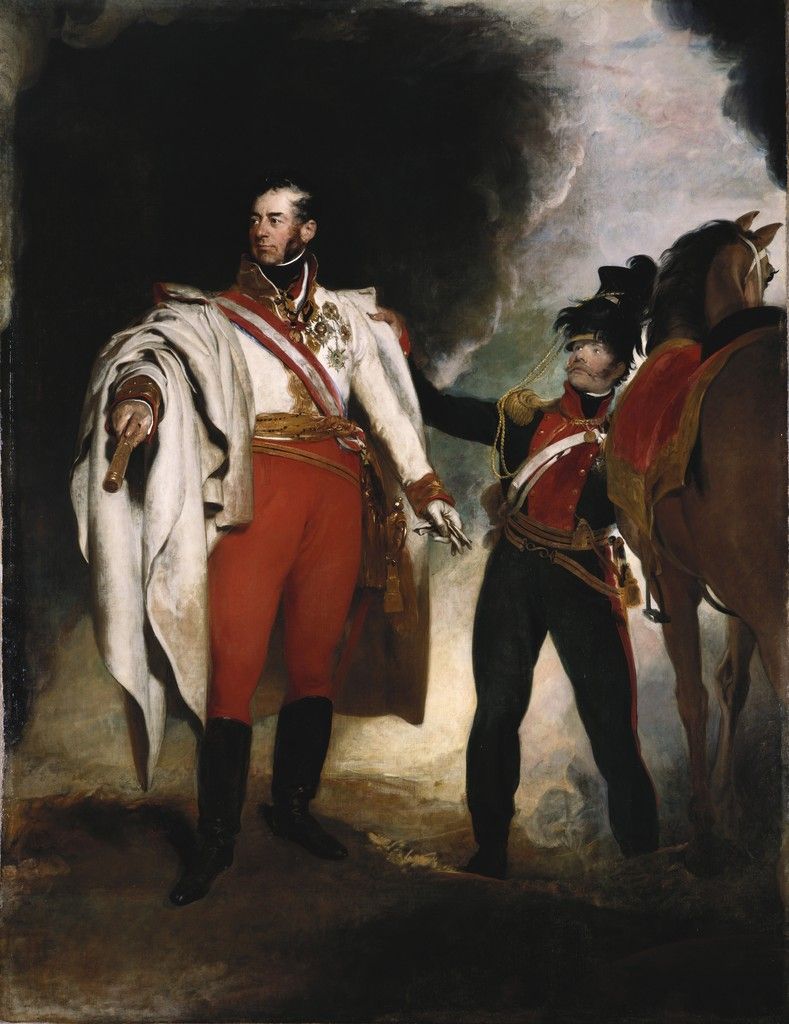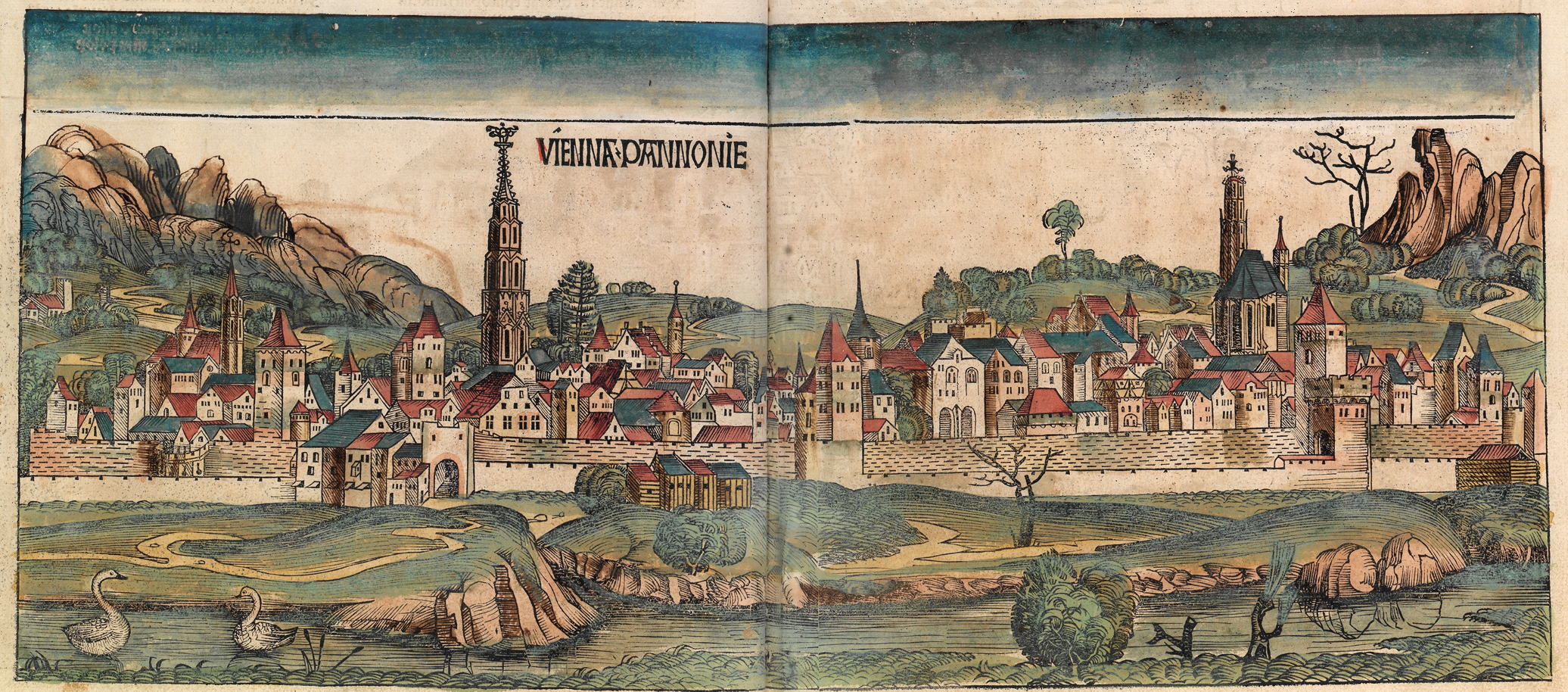|
Schwarzenbergplatz
Schwarzenbergplatz is a square in Vienna, Austria. It is actually more like a small, open street than a square, and it runs between the Kärntner Ring section of the Ringstraße and Lothringerstraße. Travelling south, the street, Schwarzenbergstraße, becomes Schwarzenbergplatz after passing Kärntner Ring. Schwarzenbergplatz then continues briefly until it becomes Rennweg Straße as it passes by the large enclosed parks of Belvedere-Garten and the Palais Schwarzenberg, and the Schwarzenberggarten to the west. A large equestrian statue of Austrian field marshal Karl Philipp, Prince of Schwarzenberg, who fought with distinction in the Napoleonic Wars, is on display. History Until the mid-19th century, most of the area of today's Schwarzenberg square was occupied by Vienna's city walls. After the demolition of the city walls in the years from 1858 to 1863, these areas were now available for construction and, similar to the Ringstraßenpalais, magnificent buildings were cons ... [...More Info...] [...Related Items...] OR: [Wikipedia] [Google] [Baidu] |
Palais Schwarzenberg
Palais Schwarzenberg is a Baroque palace in front of Schwarzenbergplatz, Landstraße, the 3rd district of Vienna, Austria. It is owned by the princely Schwarzenberg family. Construction started in 1697 under the architect Johann Lucas von Hildebrandt and finished with alterations in 1728 under Johann Bernhard Fischer von Erlach. Construction was supervised by master builder Anton Erhard Martinelli. The palace was commissioned by the Obersthofmarschall Heinrich Franz Graf von Mansfeld and Prince von Fondi, but he died while the Palace was being built. The unfinished property was finally bought in 1716 by Prince Adam Franz of Schwarzenberg, who had it completed. In 1751, a riding school and an orangery were added. The richly decorated ''Marmorgalerie'' (marble gallery) is one of the largest features in the palace. Until 2006, parts of it were a five star hotel, and the building has been used for festivities and events. It doubled as James Bond's hotel in the 1987 movie '' The ... [...More Info...] [...Related Items...] OR: [Wikipedia] [Google] [Baidu] |
Ringstraße
The Vienna Ring Road (german: Ringstraße, lit. ''ring road'') is a 5.3 km (3.3 mi) circular grand boulevard that serves as a ring road around the historic Innere Stadt (Inner Town) district of Vienna, Austria. The road is located on sites where medieval city fortifications once stood, including high walls and the broad open field ramparts (glacis), criss-crossed by paths that lay before them. It was constructed after the dismantling of the city walls in the mid-19th century. From the 1860s to 1890s, many large public buildings were erected along the in an eclectic historicist style, sometimes called ' ("Ring Road style"), using elements of Classical, Gothic, Renaissance, and Baroque architecture. Because of its architectural beauty and history, the Vienna has been called the "Lord of the Ring Roads" and is designated by UNESCO as part of Vienna's World Heritage Site. History This grand boulevard was built to replace the city walls, which had been built during the 13t ... [...More Info...] [...Related Items...] OR: [Wikipedia] [Google] [Baidu] |
Karl Philipp, Prince Of Schwarzenberg
Karl Philipp, Fürst zu Schwarzenberg (or Charles Philip, Prince of Schwarzenberg; 18/19 April 1771 – 15 October 1820) was an Austrian Generalissimo. He fought in the Battle of Wagram (1809) but the Austrians lost decisively against Napoleon. He had to fight for Napoleon in the Battle of Gorodechno (1812) against the Russians and won. He was in command of the allied army that defeated Napoleon decisively in the Battle of Leipzig (1813). He joined the Battle of Paris (1814) that forced Napoleon to abdicate. Family Karl Philipp was born 18/19 April 1771 in Vienna, the son of Johann Nepomuk Anton of Schwarzenberg and Marie Eleonore Countess of Öttingen-Wallerstein. He was one of thirteen siblings, seven of whom did not reach adulthood.''Biographisches Lexikon des Kaiserthums Oesterreich,'' Band: 33 (1877), ab Seite: 82. Imperial service Karl Philipp entered the imperial cavalry in 1788, fought in 1789 under Lacy and Laudon against the Turks, distinguished himself by his ... [...More Info...] [...Related Items...] OR: [Wikipedia] [Google] [Baidu] |
First Vienna Mountain Spring Pipeline
The First Vienna Mountain Spring Pipeline (I. Wiener Hochquellenwasserleitung) is a major part of Vienna's water supply and was the first source of safe drinking water for that city. The 95 km long line was opened on 24 October 1873, after four years of construction. Today, it delivers 62 million cubic meters of water per year (53% of Vienna's total supply in 2007). The water comes from high springs in the Rax and Schneeberg areas in Southern Lower Austria and Styria. History Beginnings to 1910 The reason for its creation Vienna's water supply originally came from private wells. In the absence of a functioning sewer system, the quality of the groundwater went from bad to worse, triggering disease and epidemics. Reinforced water pipes were built, but these primarily benefitted the wealthy and large institutions. Most of the population had to rely on spouts or fountains attached to wells. The first water pipe that provided greater coverage was built in 1803-1804, brin ... [...More Info...] [...Related Items...] OR: [Wikipedia] [Google] [Baidu] |
Soviet War Memorial (Vienna)
The Soviet War Memorial in Vienna, more formally known as the Heroes' Monument of the Red Army (german: Heldendenkmal der Roten Armee), is located at Vienna's Schwarzenbergplatz. The semi-circular white marble colonnade partially enclosing a twelve-metre figure of a Soviet soldier was unveiled in 1945. The Heroes' Monument of the Red Army in Vienna was built to commemorate the 17,000 Red Army soldiers killed in action during the Vienna offensive in World War II. Background Near the end of World War II in Europe, Soviet forces of the 3rd Ukrainian Front were ordered by Joseph Stalin to capture Vienna, both for strategic military purposes and for use as a post-war bargaining chip with the Allies. Glantz, David, The Soviet-German War 1941-1945 Clemson University, October 11, 2001. Retrieved April 2, 2011. After intense urban fighting, Vienna was captured by the Soviet Forces on 14 April 1945. Construction and Austrian perception The creation of an Allied Commission for Aust ... [...More Info...] [...Related Items...] OR: [Wikipedia] [Google] [Baidu] |
Vienna Schwarzenbergplatz1905
en, Viennese , iso_code = AT-9 , registration_plate = W , postal_code_type = Postal code , postal_code = , timezone = CET , utc_offset = +1 , timezone_DST = CEST , utc_offset_DST = +2 , blank_name = Vehicle registration , blank_info = W , blank1_name = GDP , blank1_info = € 96.5 billion (2020) , blank2_name = GDP per capita , blank2_info = € 50,400 (2020) , blank_name_sec1 = HDI (2019) , blank_info_sec1 = 0.947 · 1st of 9 , blank3_name = Seats in the Federal Council , blank3_info = , blank_name_sec2 = GeoTLD , blank_info_sec2 = .wien , website = , footnotes = , image_blank_emblem = Wien logo.svg , blank_emblem_size = Vienna ( ; german: Wien ; bar ... [...More Info...] [...Related Items...] OR: [Wikipedia] [Google] [Baidu] |
Schwarzenberg Monument Vienna June 2006 471
Schwarzenberg may refer to: People * House of Schwarzenberg, Franconian and Bohemian aristocratic family which was first mentioned in 1172 ** Karl Philipp, Prince of Schwarzenberg (1771–1820), Field Marshal in Austrian service during the Napoleonic Wars ** Prince Felix of Schwarzenberg (1800–1852), Austrian statesman ** Adolph Schwarzenberg (1890–1950) ** Karel Schwarzenberg, (born 1937), former Minister of Foreign Affairs of the Czech Republic (2007–2009), candidate in presidential election in 2013 Places In Austria * Schwarzenberg, Austria, a village in Bregenzerwald in Vorarlberg * Schwarzenberg am Böhmerwald, Upper Austria In Germany * Schwarzenberg, Saxony, a town in Saxony * Aue-Schwarzenberg, a district in Saxony * Schwarzenberg (Schömberg), a part of Schömberg im Schwarzwald, Baden-Württemberg * A part of Baiersbronn, in the Black Forest * Barony of Schwarzenberg, a domain around Schwarzenberg/Erzgeb. in Saxony In Switzerland * Schwarzenberg, Swi ... [...More Info...] [...Related Items...] OR: [Wikipedia] [Google] [Baidu] |
Vienna
en, Viennese , iso_code = AT-9 , registration_plate = W , postal_code_type = Postal code , postal_code = , timezone = CET , utc_offset = +1 , timezone_DST = CEST , utc_offset_DST = +2 , blank_name = Vehicle registration , blank_info = W , blank1_name = GDP , blank1_info = € 96.5 billion (2020) , blank2_name = GDP per capita , blank2_info = € 50,400 (2020) , blank_name_sec1 = HDI (2019) , blank_info_sec1 = 0.947 · 1st of 9 , blank3_name = Seats in the Federal Council , blank3_info = , blank_name_sec2 = GeoTLD , blank_info_sec2 = .wien , website = , footnotes = , image_blank_emblem = Wien logo.svg , blank_emblem_size = Vienna ( ; german: Wien ; ... [...More Info...] [...Related Items...] OR: [Wikipedia] [Google] [Baidu] |
Austria
Austria, , bar, Östareich officially the Republic of Austria, is a country in the southern part of Central Europe, lying in the Eastern Alps. It is a federation of nine states, one of which is the capital, Vienna, the most populous city and state. A landlocked country, Austria is bordered by Germany to the northwest, the Czech Republic to the north, Slovakia to the northeast, Hungary to the east, Slovenia and Italy to the south, and Switzerland and Liechtenstein to the west. The country occupies an area of and has a population of 9 million. Austria emerged from the remnants of the Eastern and Hungarian March at the end of the first millennium. Originally a margraviate of Bavaria, it developed into a duchy of the Holy Roman Empire in 1156 and was later made an archduchy in 1453. In the 16th century, Vienna began serving as the empire's administrative capital and Austria thus became the heartland of the Habsburg monarchy. After the dissolution of th ... [...More Info...] [...Related Items...] OR: [Wikipedia] [Google] [Baidu] |
Belvedere (palace)
The Belvedere is a historic building complex in Vienna, Austria, consisting of two Baroque palaces (the Upper and Lower Belvedere), the Orangery, and the Palace Stables. The buildings are set in a Baroque park landscape in the third district of the city, on the south-eastern edge of its centre. It houses the Belvedere museum. The grounds are set on a gentle gradient and include decorative tiered fountains and cascades, Baroque sculptures, and majestic wrought iron gates. The Baroque palace complex was built as a summer residence for Prince Eugene of Savoy. The Belvedere was built during a period of extensive construction in Vienna, which at the time was both the imperial capital and home to the ruling Habsburg dynasty. This period of prosperity followed on from the commander-in-chief Prince Eugene of Savoy's successful conclusion of a series of wars against the Ottoman Empire. Lower Belvedere On 30 November 1697, one year after commencing with the construction of the Stadtp ... [...More Info...] [...Related Items...] OR: [Wikipedia] [Google] [Baidu] |
Equestrian Statue
An equestrian statue is a statue of a rider mounted on a horse, from the Latin ''eques'', meaning ' knight', deriving from ''equus'', meaning 'horse'. A statue of a riderless horse is strictly an equine statue. A full-sized equestrian statue is a difficult and expensive object for any culture to produce, and figures have typically been portraits of rulers or, in the Renaissance and more recently, military commanders. History Ancient Greece Equestrian statuary in the West dates back at least as far as Archaic Greece. Found on the Athenian acropolis, the sixth century BC statue known as the Rampin Rider depicts a '' kouros'' mounted on horseback. Ancient Middle and Far East A number of ancient Egyptian, Assyrian and Persian reliefs show mounted figures, usually rulers, though no free standing statues are known. The Chinese Terracotta Army has no mounted riders, though cavalrymen stand beside their mounts, but smaller Tang Dynasty pottery tomb Qua figures often include them, ... [...More Info...] [...Related Items...] OR: [Wikipedia] [Google] [Baidu] |




.jpg)
